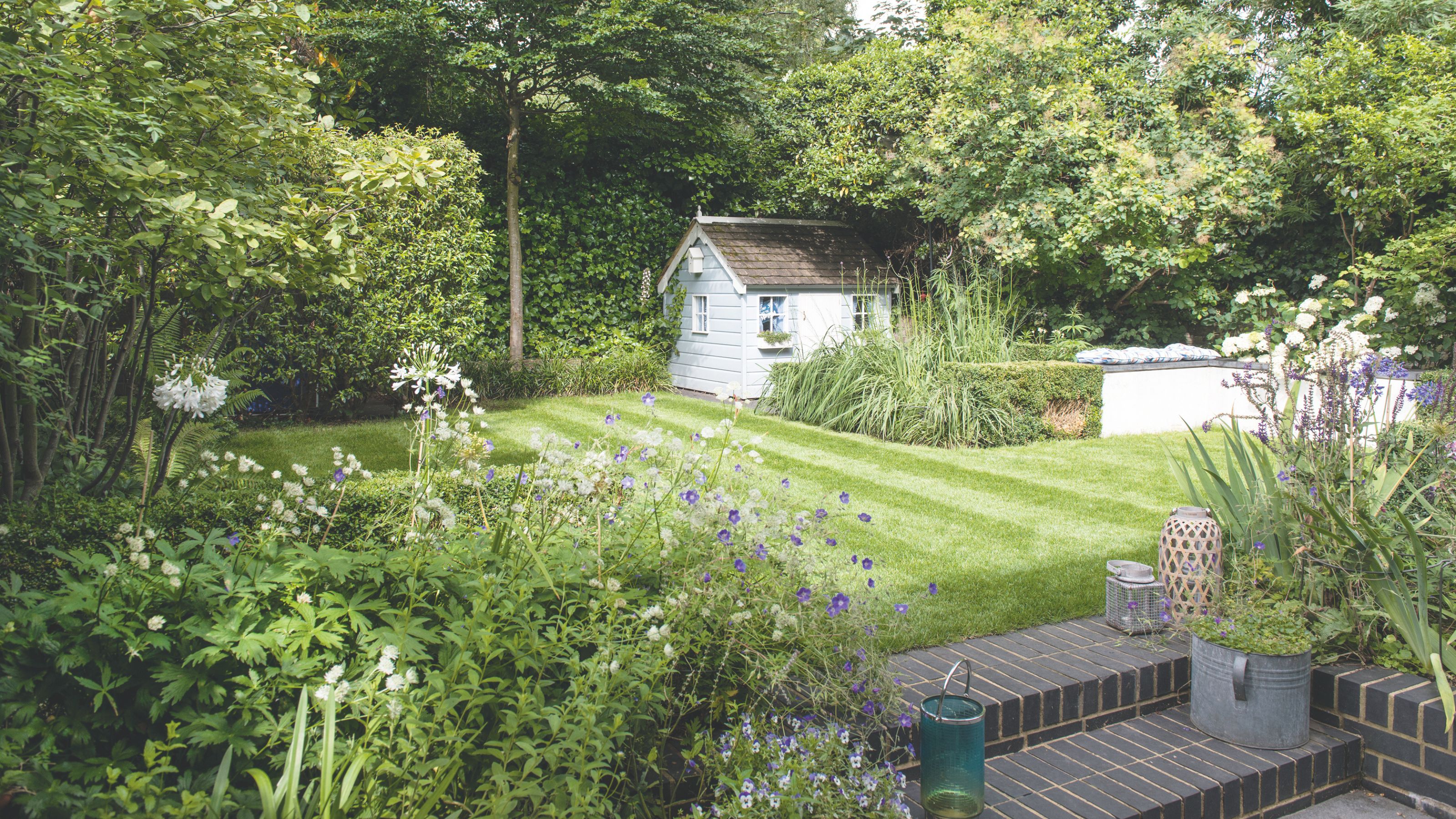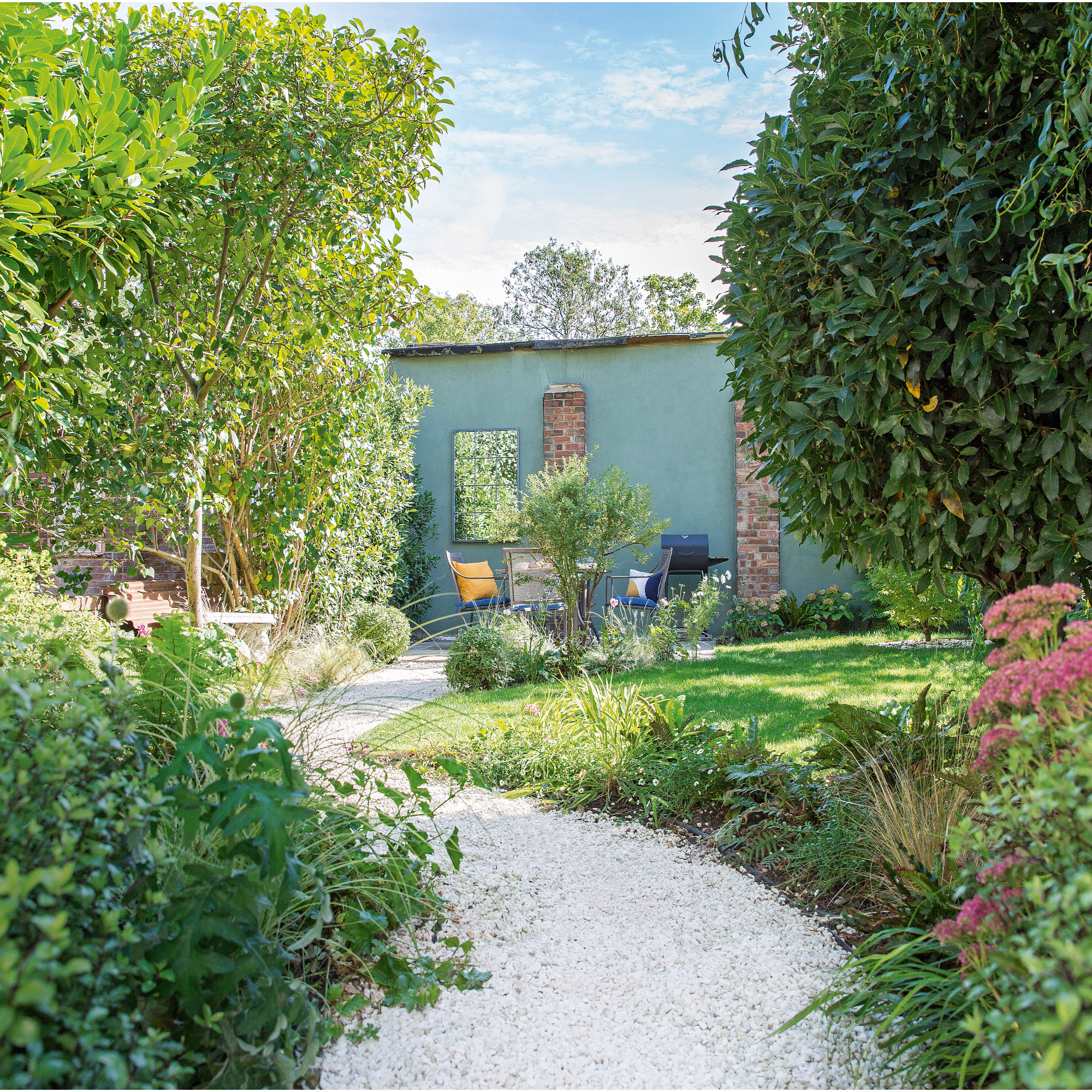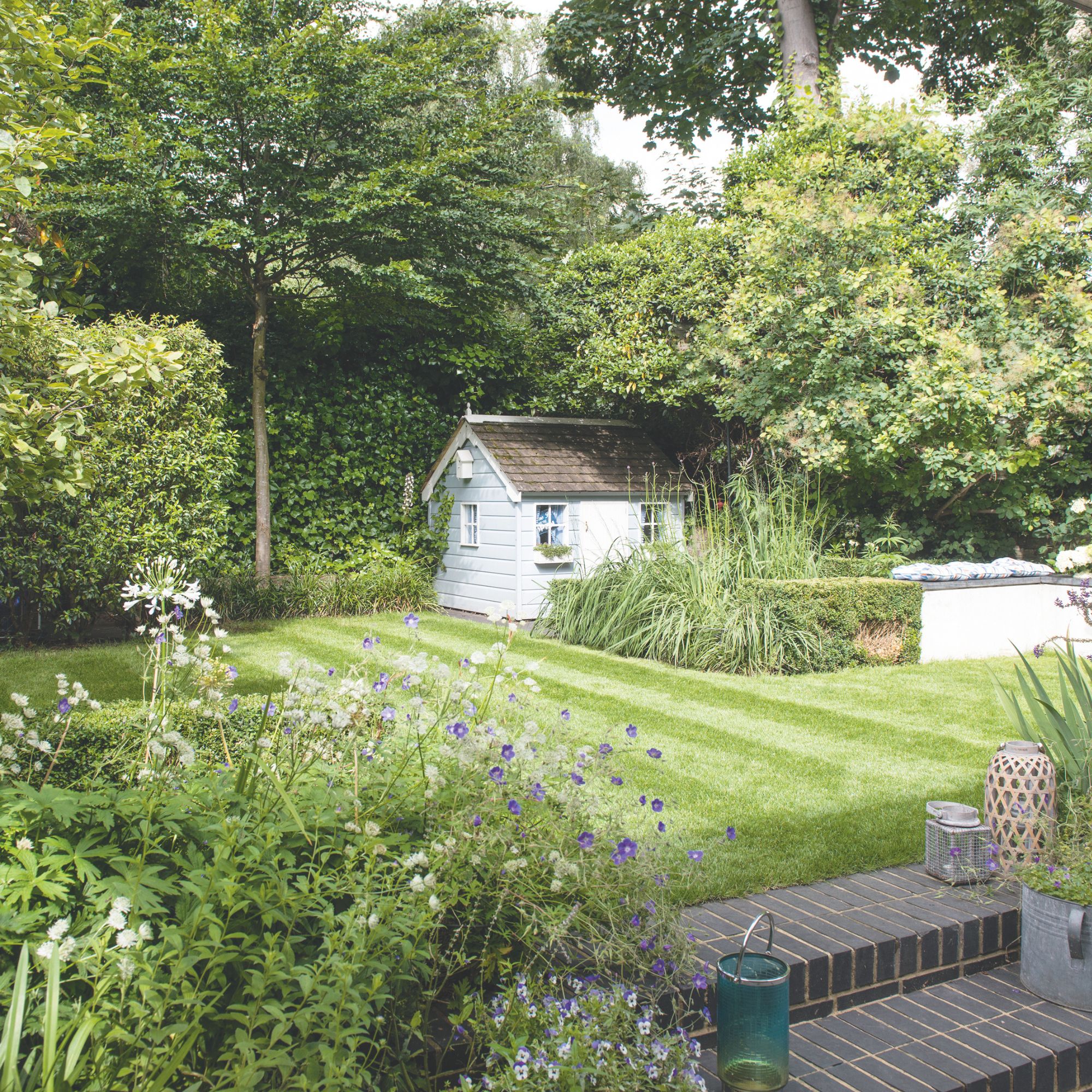Can I prune my neighbour's trees? What you need to know about the rules and regulations to avoid a dispute
Find out what you should do if you find yourself in this slightly awkward situation...

- Can you cut a neighbour's tree without permission?
- What can I do if a neighbour cuts down my tree?
- Is there a height limit for neighbour's trees?
- What can I do if my neighbour's trees are too tall?
- What can I do if a neighbour's tree is blocking my light?
- What you should and shouldn't do when pruning your neighbour's tree in your garden?
- What if my neighbour prunes my tree too much?
- What if I get into a neighbour dispute over pruning a tree?
- FAQs

Jenny McFarlane
EDITOR’S NOTE: We are aware that this article includes a quote from a purported expert whose credentials we have not been able to verify. The quote is in a queue to be removed as soon as possible. We regret this lapse in our verification process and have updated our internal protocols to reduce the risk of recurrence.
There’s nothing more frustrating than when one of your neighbour’s trees is hanging into your garden. From overhanging branches encroaching on your private space to large trees blocking the natural light from getting into your garden, it might have left you wondering, can I cut my neighbour’s trees?
Although fast-growing privacy trees can turn your garden into your very own private oasis in a matter of months, when the trees aren’t cared for or pruned regularly, they can get out of hand and cause issues for you and your neighbours. Because the rules differ slightly if you can cut your neighbour's hedge, we spoke to the experts to find out exactly what you need to know about if you can cut your neighbour's tree.
First and foremost, it’s essential to work out exactly where the tree is growing. If it’s clearly in your neighbour’s garden, this makes it their tree but ‘trees that grow on the border of two properties are considered jointly owned,’ explains Jane Dobbs, Team Gardening Lead at Allan’s Gardeners. In this case, ‘it should be a mutual decision between the two property owners to cut, prune, or remove these trees.’
But whose responsibility is it? Well, even though it can seem like a complicated endeavour, there are some handy guidelines to follow to avoid causing a dispute.
Can you cut a neighbour's tree without permission?
‘All homeowners have the legal right to trim branches from a neighbour's trees that extend onto their property, based on the 'Common Law Right to Light' doctrine,’ says Lewis Jaundrell, Mortgage and Property Specialist at Landlord Vision.
What this essentially means is that you can trim these tree branches back as long as you don't trespass onto your neighbour's property to do so. However, it’s not as simple as taking these cuttings and disposing of them.
‘If you don't have permission, don't take windfall fruit or fruit hanging from overhanging branches,’ Jane warns.
Sign up to our newsletter for style inspiration, real homes, project and garden advice and shopping know-how
Plus, once you cut any branches back, you should ‘ask your neighbour to take the cut branches and to discard them how they feel fit, as legally they still belong to them,’ Mark Lane, Accessible Gardening Expert at Stannah, adds. ‘But by keeping an open, friendly discussion with your neighbour you should avoid any difficulties.’
You also shouldn’t just throw the cut branches over the fence or into your neighbour’s property, as it ‘would be classed as garden waste fly tipping,’ Mark says. ‘Furthermore, the owner of the tree can legally ask you to return the item to them, even if it has fallen to the ground.’
What can I do if a neighbour cuts down my tree?
'It depends on where the tree was located exactly. If the tree was on the boundary but in your ownership (ownership would be determined by which side the trunk was on), then your neighbours are within their rights to cut down and prune any overhanging branches or roots that encroach their property without needing your consent.'
'If however, the tree was solely on your land, your neighbour has no rights to cut it down, and doing so without permission is criminal damage under the Criminal Damage Act 1971. Incidents can be reported to the police, and you could take civil action to claim the cost of replacing the tree.'
'Legally, your neighbour cannot cut down any part of a tree on your property without your permission. If the tree is located solely on your property, it belongs to you and any actions towards it require your consent,' explains Andrew Ward at Arbtech.
'There are a few exceptions to this, such as if branches are overhanging onto their property they are allowed to cut back these branches to the boundary line if it does not harm the health of the tree. If you find that a neighbour has cut down your tree without your permission, there are several things that you can do to address the problem.'
Graham Smith MCIHort, a gardening expert from LBS Horticulture highlights what you can do if your neighbour cuts down your tree.
- 'Document the damage to the tree – Take photographs of the tree as soon as possible after you have noticed the damage, as this can be used to prove the extent and timing of the cutting.
- Talk to your neighbour – You should try to discuss the problem with your neighbour directly, as they may actually be unaware of the legalities or the tree's boundary, and this could resolve things amicably.
- Mediation – If having a direct conversation does not lead to a resolution, you may want to consider mediation. Many councils and community organisations offer mediation services that can help with settling neighbour disputes without the need for legal action.
- Report the incident – If the tree in question was subject to a Tree Preservation Order or located in a conservation area, you will need to report any unauthorised cutting to the council. The council has the authority to investigate the issue, and can give fines or sanctions if needed.
- Legal Action – You may need to consider legal action as a last resort against your neighbour. You should consult a solicitor who specialises in property or environmental law, as they are best suited to understand what options you have.'

Graham Smith MCIhort is the gardening expert at LBS Horticulture. He has extensive knowledge in the horticultural and gardening industries, and prides himself on using this to help gardeners of all skills create their perfect outdoor space.

Is there a height limit for neighbour's trees?
‘While there are no specific height limitations for a neighbour's tree, you will generally have reasonable cause for legal recourse if it prevents sunlight from reaching your property,’ according to Lewis.
If you're worried about a specific tree blocking natural light, it might be time to talk to your neighbour. Hopefully, you’ll be on good or friendly terms with them, and you should be able to describe the impact that their tree or trees are having on your garden and property.
‘If they are comfortable with the idea, invite them to your property and let them see for themselves the problem that the tree is causing,’ MyJobQuote.co.uk’s Property Expert, Thomas Goodman, suggests. It could be that they’re unaware of the issue and would be more than happy to cut it shorter. You can also ask how they plan to maintain it to keep both sides happy, while you’re at it.
For certain trees which might be particularly big or possibly dangerous if an especially strong storm blew through, it might be worth consulting an arborist. ‘They can assess the health and safety of your trees and provide you with a report,’ Jane adds, to help both of you come to an agreement.
What can I do if my neighbour's trees are too tall?
So, what can you do if a neighbour's trees are too tall?
'If your neighbour's trees are too tall, you should firstly try to talk and negotiate with them, as councils are unlikely to do anything unless you have at least attempted this first,' explains Graham Smith MCIHort, a gardening expert from LBS Horticulture.
'If your neighbour owns their home you should speak to them directly, but if they are renting you should speak to them and their landlord. The owner of the tree causing the problem has a legal responsibility to ensure that it does not damage part of your garden, but you cannot cut it down without their permission.'

What can I do if a neighbour's tree is blocking my light?
The same 'Common Law Right to Light' doctrine, which Lewis mentioned, is also often referred to as the ‘Rights of Light Act 1959.’ And this legislation gives each landowner the right to natural light in their garden.
So, ‘if a property has received daylight for the last 20 years (the minimum prescribed period), you are entitled to continue receiving it,’ Jane explains. This means that if your neighbour has planted a particularly lofty or large tree or the foliage grows to a point where it starts blocking your light, you can petition against it.
It is worth noting that although this statutory right applies in England, Wales, and Northern Ireland, Scotland does not have such a law. If you live north of the border, you will need to contact your local council for advice.

What you should and shouldn't do when pruning your neighbour's tree in your garden?
It's important to be neighbourly so with this in mind, we asked Andrew Ward, gardening expert at Arbtech explain what you should and shouldn't do when you prune your neighbour's tree to avoid any issues.
'Generally, it would be best to try and reach a resolution with your neighbour first, but if you’re unable to do so, under established ‘common law’ any branches and roots that grow over the boundary can be pruned without needing your neighbour’s consent as long as you are taking reasonable care to not cause any damage to the tree,' explains Andrew.
'It is important to know that the parts cut from the tree still remain the property of the owner, and therefore should be offered back. Your neighbour isn’t obligated to take these back though so it would be your responsibility to dispose of them in that scenario.'
'And, as with all works associated with trees, it is imperative that checks are made to find out whether a tree has any legal restrictions applied to it prior to undertaking any work on it,' he adds. 'There are a number of ways that trees can be protected in the UK, such as Tree Preservation Orders (TPOs), Conservation Areas, and the Felling Licence System.'

What if my neighbour prunes my tree too much?
Maybe you've come to an agreement but when it comes down to the actual work, your neighbour gets a bit snip-happy. We asked two gardening experts what they would do in this circumstance.
'Common law rights allow your neighbour to carry out the minimum amount of work required. If they carry out work that extends beyond the boundary lines of their property or makes the tree unsafe, you may potentially have a case for criminal damage or trespassing,' explains Graham Smith MCIHort, a gardening expert from LBS Horticulture.

James Ewens is Commercial Director of Green Feathers, bird box camera and garden wildlife specialists, and is a self-proclaimed garden enthusiast. James is passionate about all things nature, garden, and wildlife, and when he’s not tending to his own outdoor space he’s usually checking on his bird and hedgehog cameras.
'If a neighbour prunes your tree excessively, and it results in harm to the tree’s health or its death, you may be entitled to compensation. You do have the right to request that your neighbour stops pruning excessively and causing damage, and if necessary, you can take legal action,' adds James Ewens, gardening expert at Green Feathers
'All pruning must be reasonable and not cause harm or permanent damage. Excessive pruning may also breach a Tree Preservation Order, in which case it can be reported to the local council. Before taking drastic steps, it’s always the best course of action to have an open discussion with your neighbour about tree pruning and maintenance,' says James.

Nyree leads the eight strong property disputes team at Higgs, and have been with Higgs since she established the team in January 2009. Prior to joining Higgs, she worked at Wragge & Co, and trained at what was then Martineau Johnson.
She has been advising on property disputes, residential and commercial for over twenty two years. Her practice includes advising on landlord and tenant lease renewals, rent review issues, service charge disputes and the service of and validity of break notices.
Over the last decade she has represented many clients in boundary disputes and neighbour disputes, adverse possession claims (squatters’ rights) and enforcing and removing restrictive covenants to allow an alternative use or development.
She has appeared on BBC Radio 4’s Money Box Live in July 2023, talking about the Renters Reform bill.
What if I get into a neighbour dispute over pruning a tree?
'These types of disputes can escalate quickly, leading to prolonged arguments and costly consequences, so it’s always best to attempt to resolve the matter amicably,' explains Nyree Applegrath, head of property litigation at Higgs LLP.
'If you’ve spoken to your neighbour and have not reached a resolution, you can contact your local council or seek legal advice from a boundary disputes lawyer.'
'The key takeaway is that if the tree is on your neighbour’s land, it remains their property. However, a legal expert can guide you through the process to help achieve a resolution.'
FAQs
Who pays if a neighbour's tree damages my property?
‘It's usually the tree owner's responsibility to fix any damage their tree causes,’ Jane admits. ‘Your neighbour might be liable for repair costs if their tree falls and damages your property.’
‘On the flip side of the coin, if you have trees in your garden and a broken or diseased branch falls onto your neighbour’s greenhouse or garden furniture then you might be faced with a large bill to rectify the damage,’ Mark counters. Everyone essentially has a legal obligation to ensure that their trees are not dangerous.
And most of the time ‘liability depends on whether the tree owner was negligent,’ Jane suggests. ‘When a tree is diseased, dead, or poorly maintained, and the neighbour doesn't take care of it, they're more likely to be liable for damage.’
Mark adds, ‘and don’t think that because you rent you are not obligated to maintain the trees in your garden. You should always check with the landowner and get, in writing, who is responsible for what outdoors.’
In addition to this, ‘if you have cause to believe that the tree is a danger to your property you should bring it to your neighbour’s attention. Trees which have roots that may be causing damage to your property or foundations should be investigated by a qualified arborist and a structural engineer,’ Thomas concludes.
What trees can be cut down without permission in the UK?
Certain trees are protected by what are known as Tree Preservation Orders (TPOs), which are in place to maintain their environmental, historical and aesthetic value. And cutting one of these trees down could result in a hefty fine, with the Garden Experts at Yell estimating that ‘unauthorised work on a protected tree can lead to fines of up to £20,000. And in severe cases, unlimited fines can be granted.’
So, you should be doing your research and considering several things before you pick up a pair of pruning shears or a hedge trimmer.
So there you have it: If you're wondering whether you can prune your neighbour's tree, consider these factors before getting out those secateurs.
Speaking of which, here's how to sharpen your secateurs to do a slick and careful job if your neighbour gives you the go-ahead.

Ellis Cochrane has been a Freelance Contributor for Ideal Home since 2023. Ellis has been writing about homes, interiors and gardens for four years now, with her also contributing to House Beautiful, Country Living, Expert Reviews, Real Homes and Stylist.
- Jenny McFarlaneSenior Digital Editor